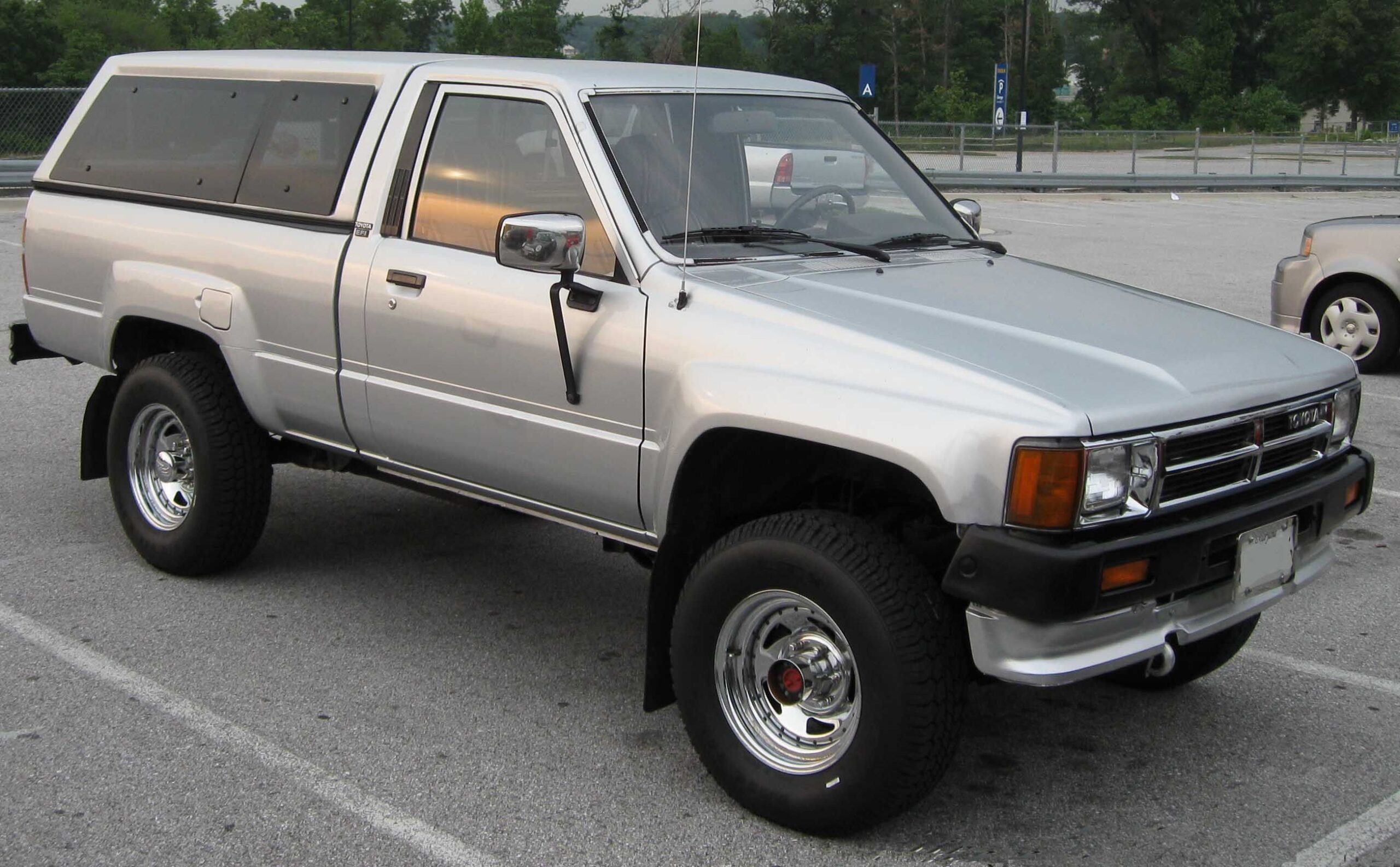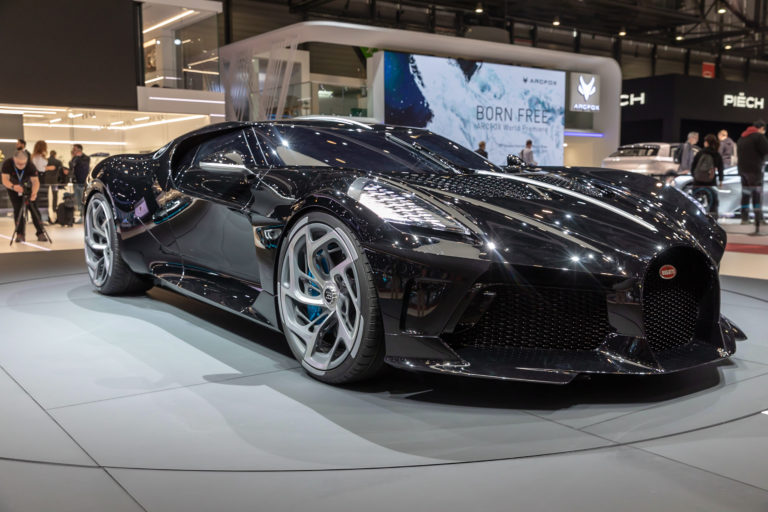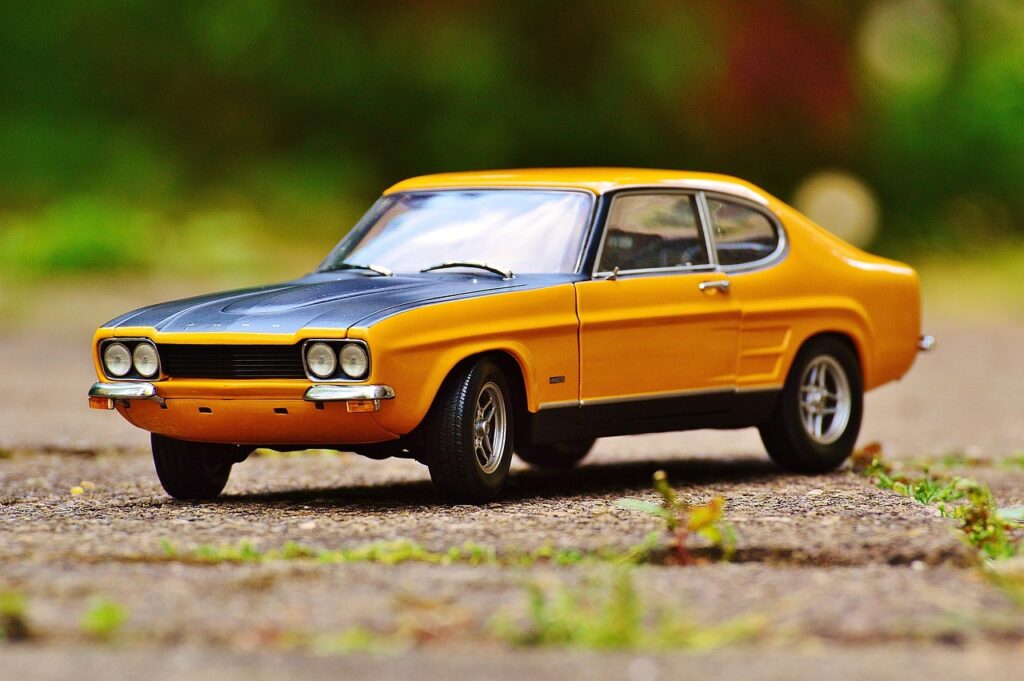
In today’s automotive market, making an informed car purchase is more critical than ever, with new and used vehicles demanding significant financial investment. The sheer volume of choices and the allure of attractive designs or compelling specifications can often mask underlying issues, leading many buyers down a path of regret. Unfortunately, the sting of buyer’s remorse is a common experience when a vehicle fails to live up to its promises, manifesting in unexpected mechanical problems, poor performance, or simply a disappointing ownership experience.
Learning from the experiences of other vehicle owners is a powerful tool in navigating this complex landscape. Our extensive analysis, drawing on detailed owner feedback and rigorous product assessments, aims to shine a light on models that consistently leave drivers wishing they had chosen differently. We prioritize objective data, real-world usage implications, and long-term reliability to provide clear, actionable advice that helps consumers make better decisions.
This comprehensive report delves into 14 specific vehicles that have repeatedly been identified by their owners as sources of significant dissatisfaction. We will explore the critical issues, from persistent mechanical failures and high maintenance costs to design flaws and underwhelming performance, that transform an exciting purchase into a source of frustration. By understanding these common pitfalls, you can better equip yourself to avoid similar mistakes and ensure your next car purchase is a smart, regret-free choice.
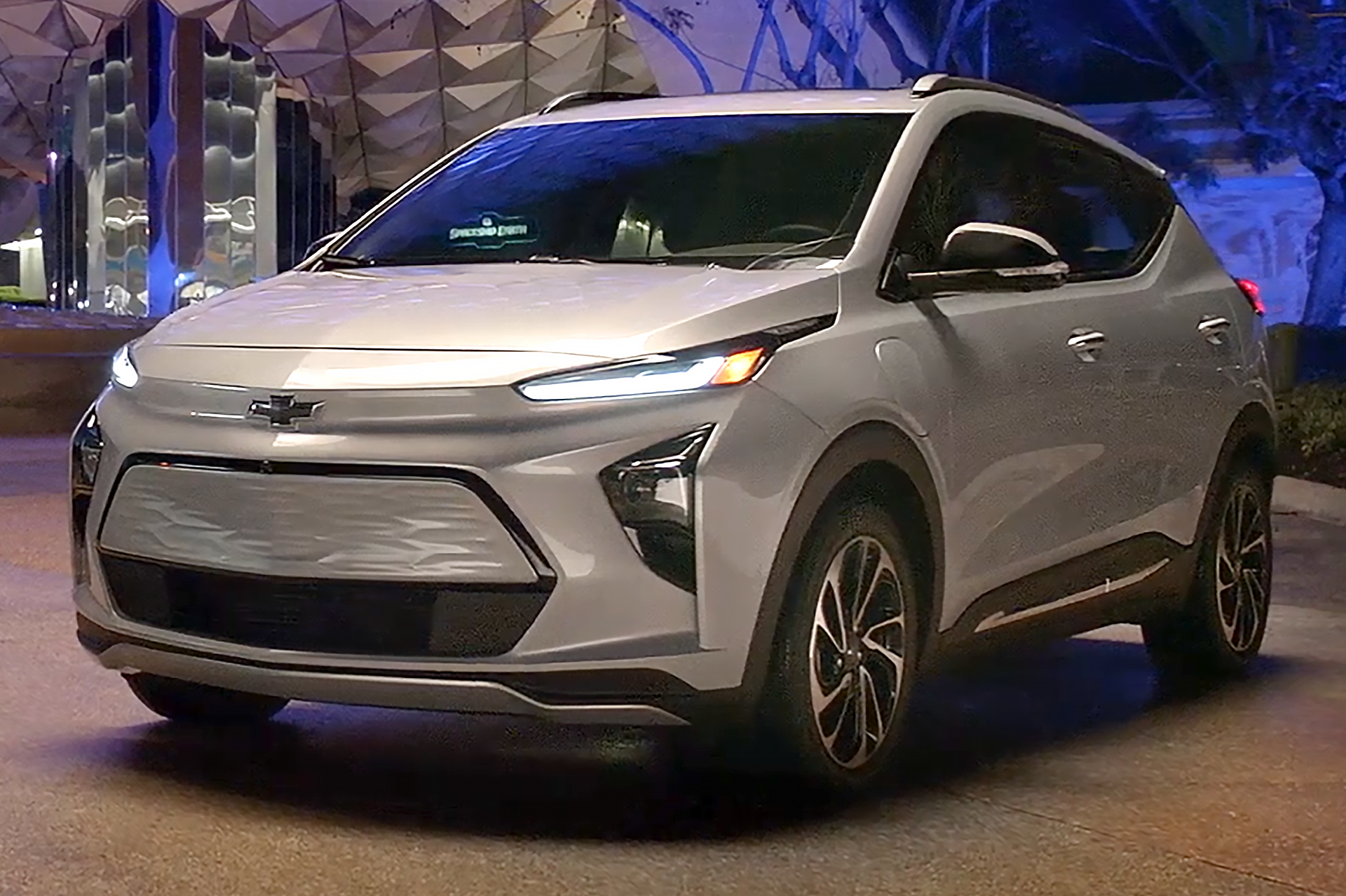
1. **Chevrolet Bolt**General Motors’ Chevrolet Bolt initially garnered praise for its affordability and a respectable range, seemingly positioned as an accessible entry into the electric vehicle market. However, its history is unfortunately marred by significant and widely publicized problems, primarily concerning its battery system. The most infamous issue involved battery-related fires, which necessitated extensive recalls in both 2020 and 2021, creating considerable concern among owners and potential buyers.
The root cause of these dangerous incidents was traced to lithium-ion batteries manufactured by LG. These batteries were found to be susceptible to short-circuiting, overheating, and ultimately igniting into flames, posing a severe safety risk. This fundamental flaw not only led to costly repairs and extended periods of vehicle unavailability for owners but also eroded trust in the model’s overall reliability.
Beyond the critical battery issue, the Chevrolet Bolt also faced criticism for several other aspects of its design and performance. Owners frequently reported that the ride quality was merely “so-so,” lacking the comfort and refinement expected in a modern vehicle. Space for rear passengers was often deemed inadequate, and the overall handling characteristics were considered unremarkable, further contributing to a less-than-satisfactory ownership experience. These collective issues ultimately led to the vehicle’s removal from Consumer Reports’ recommendation list, signaling a broader concern regarding its reliability and value in the competitive EV segment.
Car Model Information: 2019 Chevrolet Bolt EV LT
Name: Chevrolet Bolt EV
Caption: 2022 Chevrolet Bolt EV
Manufacturer: General Motors
Production: unbulleted list
ModelYears: unbulleted list
Class: Subcompact car
BodyStyle: hatchback
Layout: Front-engine, front-wheel-drive layout
Predecessor: Chevrolet Spark EV
Categories: 2020s cars, All Wikipedia articles in need of updating, All articles containing potentially dated statements, All articles with unsourced statements, Articles containing potentially dated statements from February 2018
Summary: The Chevrolet Bolt EV (marketed in Europe as Opel Ampera-e) is a battery electric subcompact hatchback manufactured and marketed by General Motors under its Chevrolet brand from late 2016 until late 2023, with a brief hiatus between mid-2021 and early 2022.
The first-generation Bolt was developed and manufactured with LG Corporation. Sales of the 2017 Bolt began in California in December 2016; it was released nationwide and international markets release in 2017. A rebadged European variant was marketed as the Opel Ampera-e in mainland Europe. In 2017, the Bolt was the second-best-selling plug-in car in the United States. It was named the 2017 Motor Trend Car of the Year, the 2017 North American Car of the Year, an Automobile magazine 2017 All Star, and was listed in Time magazine’s Best 25 Inventions of 2016. The Ampera-e was discontinued after 2018. By the end of 2020, GM had sold 112,000 Bolt and Ampera-e cars worldwide. The first-generation Bolt had been subject to at least three recalls due to battery fire risks.
In mid-2023, GM officials said they would discontinue the Bolt; after outcry, they announced plans for a next-generation model, which is expected to be revealed in 2025 for model year 2026.
Get more information about: Chevrolet Bolt
Buying a high-performing used car >>>
Brand: Chevrolet Model: Bolt
Price: $13,090 Mileage: 64,980 mi.
Read more about: Icons of the Asphalt: 14 Classic Cars from the 1960s That Defined a Golden Era of Automotive Excellence

2. **Hyundai Kona Electric**Hyundai has certainly made strides in the electric vehicle market with some well-received models, but the Kona Electric stands out as a notable exception, illustrating that not every offering hits the mark. Much like the Chevrolet Bolt, the Hyundai Kona Electric has a troublesome past concerning battery integrity and safety. It too has been embroiled in a series of battery fires and subsequent recalls, casting a shadow over its reputation.
The carmaker initiated a worldwide recall in both 2020 and 2021 specifically to address the fire risks, necessitating the replacement of battery packs in affected electric vehicles. This proactive measure, while essential for safety, highlighted a serious design and manufacturing flaw that caused significant inconvenience and concern for its owners. The necessity of such widespread battery replacements underscores a deep-seated reliability problem, similar to those faced by other early EV adopters using certain lithium-ion battery technologies.
However, the battery issues, as some experts have noted, were merely “the tip of the iceberg” for the Hyundai Kona Electric. This suggests a broader range of potential problems that contribute to buyer dissatisfaction, extending beyond the headline-grabbing fire risks. While the context does not explicitly detail these additional issues, the phrase itself implies a vehicle with multiple points of failure or disappointment, urging potential buyers to exercise extreme caution and conduct thorough research before considering this model.
Car Model Information: 2022 Honda Civic Sport
Name: Hyundai Kona
Caption: Hyundai Kona N Line (SX2)
Manufacturer: Hyundai Motor Company
Aka: Hyundai Kauai (Portugal)
Production: 2017–present
ModelYears: 2018–present
Class: Subcompact crossover SUV
BodyStyle: SUV
Layout: ubl
Categories: 2020s cars, All-wheel-drive vehicles, All Wikipedia articles in need of updating, Articles containing Chinese-language text, Articles containing Korean-language text
Summary: The Hyundai Kona (Korean: 현대 코나) is a subcompact crossover SUV produced by the South Korean manufacturer Hyundai. The first-generation Kona debuted in June 2017 and the production version was revealed later that year. It is positioned between the Venue or Bayon and the Tucson in Hyundai crossover SUV line-up. The battery electric version called the Kona Electric (or Kona EV) was first launched in South Korea during the first half of 2018 and rolled out gradually worldwide afterwards.
Get more information about: Hyundai Kona
Buying a high-performing used car >>>
Brand: Hyundai Model: Kona Electric
Price: $26,626 Mileage: 14,020 mi.
Read more about: The Shifting Automotive Landscape: Why Used Car Values Are Collapsing, and What It Means for Buyers and the Economy
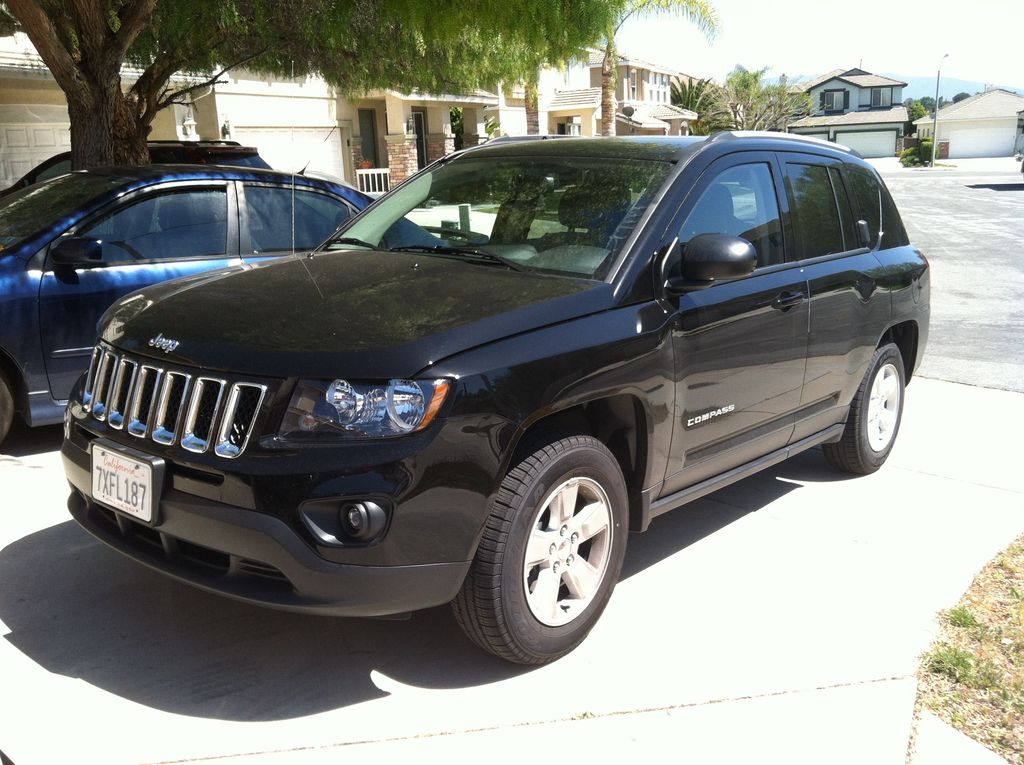
3. **Jeep Compass**The Jeep Compass, a compact SUV, has earned a reputation for being a source of considerable frustration for its owners across various model years. This vehicle is frequently cited as one to “steer clear of” if one wishes to avoid a “migraine headache on wheels,” a clear indication of its problematic nature. A significant and recurrent complaint revolves around its transmission systems, specifically both the continuously variable transmission (CVT) and the 9-speed automatic transmissions.
Owners have reported that these transmissions are prone to “herky-jerky shifting” and, more alarmingly, “catastrophic failure,” leading to expensive repairs and a severely compromised driving experience. This unreliability in a core mechanical component is a major red flag for any potential buyer, as it directly impacts both the vehicle’s functionality and its long-term cost of ownership. Such issues detract significantly from the vehicle’s practicality and trustworthiness, particularly for a compact SUV designed for daily use.
Beyond the pervasive transmission woes, the Jeep Compass is also plagued by other performance and quality concerns. Owners frequently complain about “poor engine performance,” which translates to a less responsive and enjoyable driving experience. “Excessive oil consumption” is another common issue, hinting at potential engine wear or design flaws that could lead to higher running costs and maintenance. Additionally, problems with the “electrical system” further complicate ownership, contributing to general unreliability. Furthermore, reports highlight issues with the “driver seat,” “indicator visibility,” and overall “lower comfort” compared to competitors, along with a perceived lack of power (“so little horsepower”) that makes it feel less like a “real Jeep.” These combined factors explain why many owners express deep regret over their purchase of the Jeep Compass.
Car Model Information: 2019 Jeep Compass Limited
Name: Jeep Compass
Caption: 2019 Jeep Compass
Manufacturer: Jeep
Production: 2006–present
ModelYears: 2007–present
Class: Compact crossover SUV
BodyStyle: SUV
Layout: Front-engine, front-wheel-drive layout
Chassis: Unibody
Categories: 2010s cars, 2020s cars, All-wheel-drive vehicles, All Wikipedia articles written in American English, Articles with short description
Summary: The Jeep Compass is a compact crossover SUV, introduced in 2006 for the 2007 model year. The first generation Compass and Patriot, its rebadged variant, were among Jeep’s first crossover SUVs. The second-generation Compass debuted in September 2016 in Brazil and at the Los Angeles International Auto Show in November 2016, sharing a modified platform with the Renegade. It is positioned between the smaller Renegade and the larger Cherokee globally or the Commander in South America. The third-generation Compass debuted in May 2025, built on the STLA Medium by Stellantis, shared with other PSA Groupe vehicles.
Get more information about: Jeep Compass
Buying a high-performing used car >>>
Brand: Jeep Model: Compass
Price: $17,000 Mileage: 60,192 mi.
Read more about: Wrench Warrior’s Woes: 15 Car Models That Owners Say Are a Nightmare to Repair

4. **Dodge Dart**The Dodge Dart, marketed as a compact sedan, paradoxically comes with a host of “full-size car problems,” making it a frequent entry on lists of vehicles owners wish they had never purchased. The breadth of its reliability issues is striking, encompassing nearly every major system of the vehicle. Owners have reported widespread dissatisfaction stemming from problems with the “transmission,” “engine,” “suspension,” and even the “brakes,” indicating a fundamental lack of engineering integrity across the board.
According to Consumer Reports, a significant majority of its buyers, “around six in 10,” openly express their dissatisfaction with the vehicle. This statistic alone provides a stark warning about the ownership experience, highlighting a widespread sentiment of regret. The practical implications of these mechanical shortcomings translate into a less-than-pleasant daily driving experience and often lead to frequent, costly visits to the service center.
Specific complaints that contribute to this high level of buyer’s remorse include “sluggish acceleration,” which can make merging into traffic or passing on highways a frustrating and potentially unsafe endeavor. Drivers also struggled with the “difficulty in finding a comfortable seated position,” suggesting ergonomic design flaws that impact long-term driving comfort. To compound these issues, the Dart was also criticized for a “poor AC system,” a significant drawback, especially in warmer climates, making it a vehicle that offered little in the way of comfort, reliability, or driving pleasure.
Car Model Information: 1972 Dodge Dart Swinger
Name: Dodge Dart
Caption: 1966 Dodge Dart GT 2-door hardtop
Manufacturer: Dodge
Production: 1959–1976 (US market)
1969-1981 (Brazil)
AlternativeName: Charger (Brazil)
ModelYears: 1960–1976 (US market)
1970-1981 (Brazil)
Class: Full-size
Layout: FR layout
Predecessor: Dodge Coronet#Fourth generation (1957–1959)
Related: Plymouth Valiant,Chrysler Valiant,Dodge Phoenix
Successor: Dodge Aspen,Dodge Diplomat,Talbot Tagora
Categories: 1970s cars, All articles with unsourced statements, Articles with short description, Articles with unsourced statements from December 2023, Articles with unsourced statements from May 2025
Summary: The Dodge Dart is a line of passenger cars produced by Dodge from the 1959 to 1976 model years in North America, with production extended to later years in various other markets.
The production Dodge Dart was introduced as a lower-priced full-size model in 1960 and 1961, but became a mid-size car for one model year for 1962, and was then reduced to a compact for two generations, from 1963 to 1976.
Chrysler had first used ‘Dart’ name plates on two Italian styled show cars, in 1956 and 1957, before it became a Dodge model name. The Dart nameplate was resurrected for a Fiat-derived compact car that was introduced in 2012.
Get more information about: Dodge Dart
Buying a high-performing used car >>>
Brand: Dodge Model: Dart
Price: $18,250 Mileage: 40,424 mi.
Read more about: The End of an Era: 14 Iconic Muscle Cars That Roared into Automotive History But Faded from the Mainstream

5. **Dodge Grand Caravan**The Dodge Grand Caravan holds a unique place in many families’ memories, often serving as a workhorse for transportation. However, beneath any nostalgic sentiment, the reality for many owners is far from “smooth driving.” A central and deeply frustrating issue for Grand Caravan owners is the prevalent problem of “transmission failure.” This is a common complaint, severely impacting the reliability of a vehicle that is often relied upon as a primary “family, pet, and thing hauler.”
Before a complete transmission failure occurs, owners frequently experience a range of precursor issues that signal impending problems. These include “delayed gear engagement,” “rough shifting,” and “slipping,” all of which degrade the driving experience and indicate significant mechanical distress. Such symptoms are not merely inconveniences; they can pose safety concerns and inevitably lead to costly and time-consuming repairs, undermining the vehicle’s core utility.
In addition to the pervasive transmission woes, the Dodge Grand Caravan is also associated with other significant reliability concerns. Many owners report “electrical system problems,” which can manifest in various frustrating ways, from minor glitches to critical malfunctions. “Heavy oil consumption” is another recurring complaint, potentially indicating engine issues that can escalate over time. Furthermore, aspects such as “uncomfortable second-row seats,” a “horrible sound system,” and “cheap upholstery” that “doesn’t last even under mild wear and tear” contribute to an overall perception of low quality, making owners lament their purchase and wish for a different choice.
Car Model Information: 2022 Honda Civic Sport
Caption: 2011 Dodge Grand Caravan Mainstreet
Name: Dodge Grand Caravan
Manufacturer: Chrysler Corporation,Daimler AG,Chrysler LLC,Chrysler Group LLC,FCA US LLC
Class: Minivan
Layout: FF layout,F4 layout
Production: November 2, 1983 –August 21, 2020
ModelYears: 1984–2020
Related: Plymouth Voyager,Chrysler Town & Country (minivan),Dodge Mini Ram,Chrysler Voyager,Volkswagen Routan
Assembly: Windsor, Ontario,Fenton, Missouri,Fenton, Missouri,Fuzhou
Successor: Dodge Journey,Chrysler Voyager
Categories: All-wheel-drive vehicles, All articles with unsourced statements, Articles with short description, Articles with unsourced statements from December 2017, Articles with unsourced statements from May 2009
Summary: The Dodge Caravan is a series of minivans manufactured by Chrysler from the 1984 through 2020 model years. The Dodge version of the Chrysler minivans, was marketed as both a passenger van and a cargo van (the only version of the model line offered in the latter configuration). For 1987, the model line was joined by the long-wheelbase Dodge Grand Caravan. Produced in five generations across 36 model years, the Dodge Caravan is the second longest-lived Dodge nameplate (exceeded only by the Dodge Charger). Initially marketed as the Dodge counterpart of the Plymouth Voyager, the Caravan was later slotted between the Voyager and the Chrysler Town & Country. Following the demise of Plymouth, the model line became the lowest-price Chrysler minivan, ultimately slotted below the Chrysler Pacifica.
Sold primarily in the United States and Canada, the Dodge Caravan was also marketed in Europe and other international markets under the Chrysler brand (as the Chrysler Voyager or Chrysler Caravan). From 2008 onward, Dodge marketed the model line only as the Grand Caravan; Ram Trucks sold a cargo-only version of the model line as the Ram C/V Tradesman. The model line was also rebranded as the Volkswagen Routan from 2009 through 2014.
After the 2020 model year, the Dodge Grand Caravan was discontinued, ending production on August 21, 2020. For 2021 production, the Grand Caravan nameplate was moved to Chrysler, which used it for a Canadian-market version of the Chrysler Pacifica (in the United States, the exact vehicle was marketed as the Chrysler Voyager).
For its entire production run, the Dodge Caravan/Grand Caravan was manufactured by Chrysler Canada (now Stellantis Canada) at its Windsor Assembly facility (Windsor, Ontario). From 1987 until 2007, the model line was also manufactured by Chrysler at its Saint Louis Assembly facility (Fenton, Missouri). Since their introduction in late 1983, over 14.6 million Chrysler minivans have been sold worldwide (including export versions and versions sold through rebranding).
Get more information about: Dodge Caravan
Buying a high-performing used car >>>
Brand: Dodge Model: Grand Caravan
Price: $26,626 Mileage: 14,020 mi.
Read more about: The Unsung Heroes: 12 Vintage Station Wagons That Outran and Outclassed Minivans
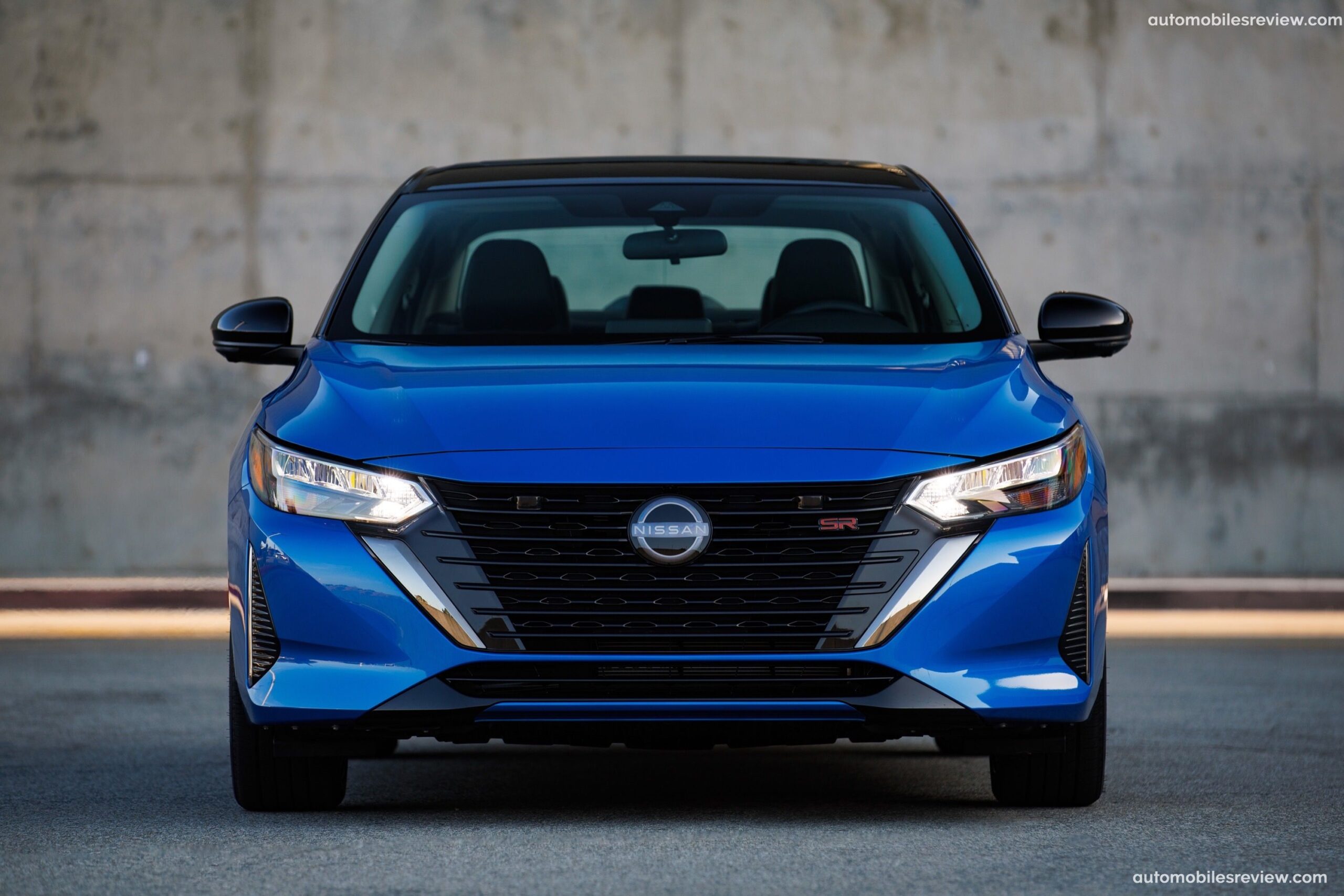
6. **Nissan Sentra**The Nissan Sentra has seen various model years, and while some may have been adequate, the models produced between 2013 and 2019 are consistently highlighted as particularly problematic and best avoided. A major source of frustration for many Sentra owners during this period was the infamous continuously variable transmission (CVT), which proved to be a significant “thorn in the side” for a multitude of drivers. This specific transmission technology, in these models, was a frequent point of failure and dissatisfaction
Problems associated with the CVT in these Sentra model years were diverse and impactful. Owners reported instances of the transmission “overheating,” which could lead to reduced performance and potential long-term damage. “Jerky acceleration” and “shuddering” were also common complaints, resulting in an uncomfortable and unpredictable driving experience that severely detracted from the vehicle’s daily usability. These transmission issues often necessitated expensive repairs or even full replacements, adding significantly to the cost of ownership and further fueling owner regret.
Beyond the transmission, the Nissan Sentra from these model years also presented other reliability concerns. There was a “laundry list of issues” that included instances of “engine stalling,” which is a serious safety concern and a major inconvenience. Furthermore, the vehicle was subject to numerous “recalls related to the vehicle’s airbags, seatbelts, brakes, and more,” indicating broader quality control issues. While some might describe the Sentra as “serviceable at best,” and acknowledge its utilitarian nature leads to sales, the consensus among many owners is that it is “not the type of car one would find remarkable” and “nothing special,” confirming its place on a list of regretted purchases.
Car Model Information: 2018 Nissan Sentra S
Name: Nissan Sentra
Caption: 2021 Nissan Sentra SR (B18; Canada)
Manufacturer: Nissan
Aka: Nissan Sunny
Production: 1982–present
Class: Subcompact car
Predecessor: Nissan Sunny#B310
Categories: 1990s cars, 2000s cars, 2010s cars, 2020s cars, All Wikipedia articles written in American English
Summary: The Nissan Sentra is a series of automobiles manufactured by the Japanese automaker Nissan since 1982. Since 1999, the Sentra has been categorized as a compact car, while previously it occupied the subcompact class. Until 2006, Sentra was a rebadged export version of the Japanese Nissan Sunny, but since the 2013 model year, Sentra is a rebadged export version of the Sylphy. The Sentra nameplate is not used in Japan. Many other countries in Latin America sell their versions of the Sunny as the Sentra. In Mexico, the first three generations of the Sentra were known as the Nissan Tsuru (Japanese for crane), and the B13 model was sold under that name until 2017, alongside the updated models badged as Sentra.
In North America, the Sentra currently serves as Nissan’s compact car, despite being rated as a mid-size car by the EPA due to its interior volume since the 2007 model year. While previous Sentras were subcompacts, the Sentra has grown over the years, with the Nissan Versa having replaced the Sentra in the entry-level area.
The Sentra name was created for Nissan by Ira Bachrach of NameLab, and Bachrach describes the origin as “Nissan wanted consumers to understand that it was quite safe even though it was small. The word Sentra sounds like central as well as sentry, which evokes images of safety.”
Get more information about: Nissan Sentra
Buying a high-performing used car >>>
Brand: Nissan Model: Sentra
Price: $10,650 Mileage: 78,361 mi.
Read more about: Mechanics Reveal 14 Used Cars That Will Drain Your Wallet: A Definitive Guide for Smart Buyers
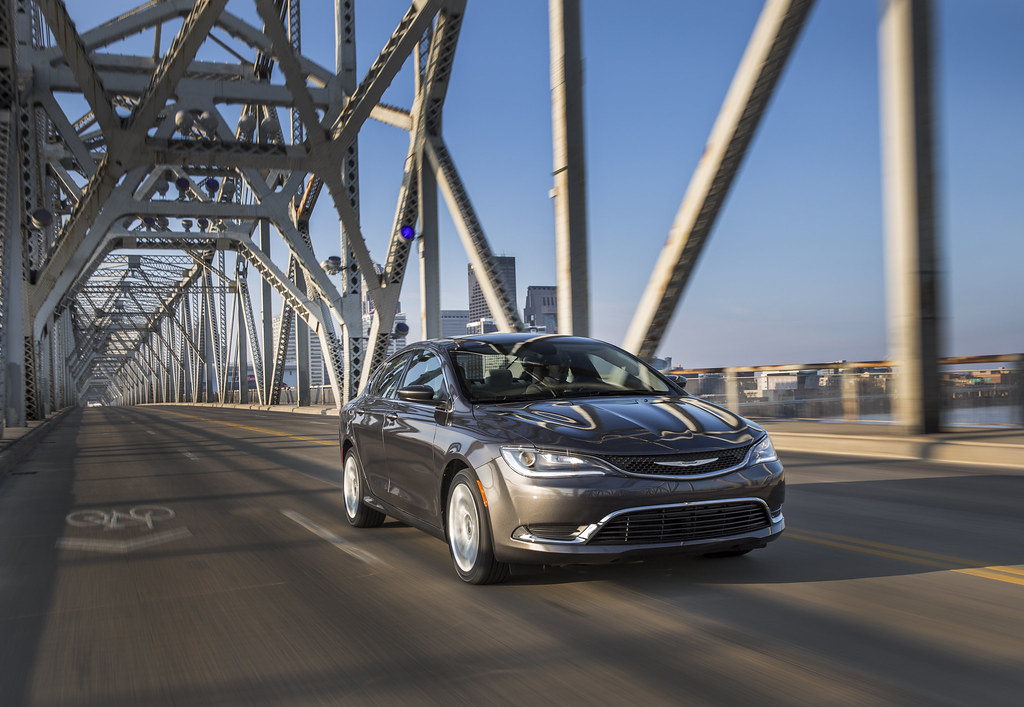
7. **Chrysler 200**The Chrysler 200, manufactured between 2011 and 2017, is widely recognized for a multitude of reliability issues that have left many of its owners dissatisfied. A particularly troublesome component, especially for owners of the 2015, 2016, and 2017 models, was the 9-speed automatic transmission. This specific transmission unit was found to be “especially problematic,” frequently leading to a cascade of issues that often culminated in “transmission failure,” a critical and costly defect.
These transmission problems were, for many, just the beginning of their vehicle’s woes. The overall reliability of the Chrysler 200 was consistently questioned, affecting the daily lives of its drivers. Owners also frequently encountered “engine performance problems,” which could manifest as a lack of power, rough idling, or other operational inconsistencies that detract from the driving experience and suggest underlying mechanical fragility.
Furthermore, the Chrysler 200 was criticized for its fundamental driving dynamics and comfort. Many users described the car as having “clumsy handling” and noted that the “base four-cylinder engine” made the vehicle feel “severely outdated” and underpowered for its class. Adding to the discomfort, there was “too much road noise” and a generally “rough ride,” indicating poor sound insulation and suspension tuning. Even essential features like “cruise control” were reported as “less than reliable,” rounding out a comprehensive list of reasons why the Chrysler 200 stands out as a car many owners regret buying, citing persistent issues that undermine its value and practicality.”
Navigating the complexities of car ownership requires a diligent approach, and unfortunately, the list of vehicles that fall short of expectations extends beyond our initial seven. These additional models, spanning various segments and price points, frequently represent a crossroads where initial appeal gives way to persistent problems, unexpected costs, and a general erosion of owner satisfaction. By examining these cases, we aim to further equip consumers with the knowledge to make choices rooted in long-term reliability and real-world performance, rather than fleeting promises.
Car Model Information: 2015 Chrysler 200 S
Name: Chrysler 200
Manufacturer: Chrysler
Production: 2010–2016
ModelYears: 2011–2017
Assembly: Sterling Heights, Michigan
Class: Mid-size car
Sp: us
Predecessor: Chrysler Sebring
Categories: 2010s cars, All articles with dead external links, All articles with unsourced statements, Articles with dead external links from July 2020, Articles with permanently dead external links
Summary: The Chrysler 200 is a mid-size sedan that was manufactured and marketed by Chrysler from model years 2011 to 2017 across two generations in four-door sedan and two-door convertible (first generation only) body styles.
The 200 nameplate debuted on the 200C, a prototype hybrid vehicle shown at the 2009 North American International Auto Show in Detroit and based on the Chrysler 300. The 200C concept was engineered to accept either traditional gasoline, hybrid or full-electric powertrains.
Get more information about: Chrysler 200
Buying a high-performing used car >>>
Brand: Chrysler Model: 200
Price: $7,200 Mileage: 122,275 mi.
Read more about: Beyond the Chrome: A Deep Dive into 12 Iconic 1960s Luxury Car Ads That Defined a Golden Era of Automotive Storytelling
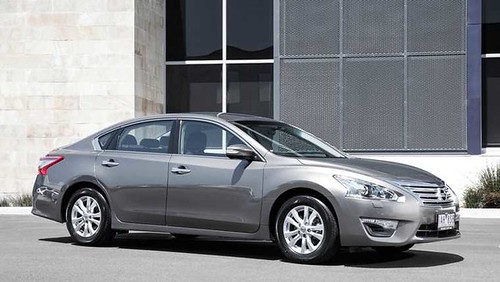
8. **Nissan Altima**Another car that frequently appears on lists of regrettable purchases is the Nissan Altima, particularly models produced between 2013 and 2019. A primary culprit behind owner dissatisfaction, much like with other Nissan models of the era, is its continuously variable transmission (CVT). This transmission unit has proven to be notoriously problematic, with issues that often become significant pain points for drivers, severely compromising the vehicle’s reliability and driving experience.
The problems associated with the Altima’s CVT are diverse and can manifest in various ways, from erratic behavior to outright failure. This unreliability in such a fundamental component not only leads to frustrating driving conditions but also typically results in expensive and time-consuming repairs or replacements. The financial burden and inconvenience associated with these transmission woes are a major contributor to owner regret, transforming what should be a straightforward daily commute into a source of constant worry.
Beyond the pervasive transmission concerns, the Nissan Altima also presents a range of other mechanical and system-related issues. Owners have reported problems with the vehicle’s steering system, which can impact control and safety. Furthermore, excessive oil consumption and oil leaks are commonly cited complaints, suggesting underlying engine health concerns that can lead to increased maintenance costs and potential long-term damage if not addressed promptly.
Adding to this extensive list of grievances are reports of sensor malfunctions and non-responsive ignitions, which can cause unpredictable operational problems and safety hazards. Moreover, a frequently criticized “faulty AC system” exacerbates the discomfort for drivers, especially in warmer climates. These cumulative issues paint a clear picture of a vehicle with fundamental reliability shortcomings, explaining why many Altima owners express deep regret over their purchase.
Car Model Information: 2020 Nissan Altima 2.5 SL
Name: Nissan Altima
Caption: 2024 Nissan Altima SR (L34; US)
Manufacturer: Nissan
Aka: Nissan Bluebird
Production: 1992–present
Class: Compact car
Predecessor: Nissan Bluebird,Nissan Stanza
ModelYears: 1993–present
Categories: 2000s cars, 2010s cars, 2020s cars, All-wheel-drive vehicles, All Wikipedia articles written in American English
Summary: The Nissan Altima is a mid-size car manufactured by Nissan since 1992. It is a continuation of the Nissan Bluebird line, which began in 1955.
The Altima has historically been larger, more powerful, and more luxurious than the Nissan Sentra but less so than the Nissan Maxima. The first through fourth-generation cars were manufactured exclusively in the United States and officially sold in North and South America, along with the Middle East and Australia. For other markets, Nissan sold a related mid-size sedan called the Nissan Teana which was between the Altima and Maxima in terms of size. In 2013, the Teana became a rebadged version of the fifth-generation Altima.
The name “Altima” was originally applied to a top trim line of the Nissan Leopard for the Japanese market in 1986, and then to the Nissan Laurel Altima mid-size car sold in Central America and the Caribbean before 1992. In 1992, Nissan discontinued the Stanza which was a Nissan Bluebird clone, replacing it with the US-built Altima, while remaining a compact car. The first Altima was produced in June 1992, as a 1993 model. All Altima models for the North American market were built in Smyrna, Tennessee, until June 2004, when Nissan’s Canton, Mississippi plant also began producing the model to meet high demand.
Get more information about: Nissan Altima
Buying a high-performing used car >>>
Brand: Nissan Model: Altima
Price: $15,990 Mileage: 93,989 mi.
Read more about: The 15 Most Underrated SUVs You Can Buy Right Now: Uncovering Automotive Excellence Beyond the Hype
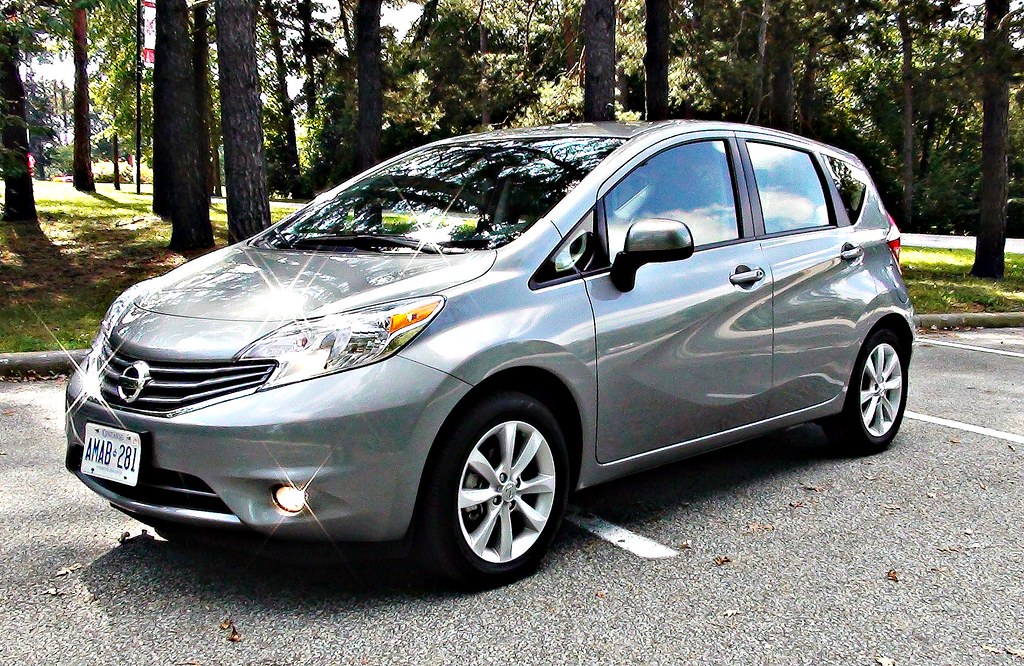
9. **Nissan Versa Note**While the Nissan Versa Note was initially attractive due to its “super-cheap” small hatchback designation, its low price point, unfortunately, often proved to be a direct reflection of its underlying quality. For many owners, the initial savings quickly evaporated as they grappled with a host of issues that made the ownership experience far from satisfactory. This vehicle serves as a stark reminder that sometimes, a low upfront cost can mask significant long-term compromises.
Central to the widespread dissatisfaction among Nissan Versa Note owners was, predictably, its continuously variable transmission (CVT). This particular transmission unit, a common feature in many Nissan models of its generation, “frustrated Nissan Versa Note owners to no end” with its inconsistent performance and propensity for mechanical issues. The daily driving experience was often marred by unexpected surges or hesitations, undermining confidence and comfort on the road.
Compounding the transmission woes was the vehicle’s “anemic acceleration” derived from its 1.6-liter 4-cylinder engine. This lack of power translated into a less responsive and often sluggish driving experience, particularly noticeable when merging onto highways or attempting to pass other vehicles. For a car designed for urban agility, its underwhelming performance was a significant drawback, limiting its versatility and appeal to drivers seeking even a modest level of spirited driving.
Furthermore, the Versa Note was plagued by comfort and quality issues that belied its utility. Complaints frequently highlighted its diminutive size, often described as “too small,” alongside “uncomfortable seats” that made longer journeys unpleasant. The presence of “horrible road noise” further degraded the cabin experience, making it difficult for occupants to hold conversations or enjoy the ride. Ultimately, despite its seemingly reasonable initial price, these pervasive issues left many owners feeling that the cost was “a bit too high” given the compromises in quality and comfort.
Car Model Information: 2022 Honda Civic Sport
Categories: All set index articles, Articles with short description, CS1 Mexican Spanish-language sources (es-mx), CS1 Portuguese-language sources (pt), CS1 Spanish-language sources (es)
Summary: Nissan Versa is an automobile nameplate used by the Japanese manufacturer Nissan in the Americas for the following models:
According to a Nissan press release in 2008, “versa” is short for “versatile space” meant to imply the spaciousness of the interior and configurable cargo arrangements. The Versa is one of the few remaining subcompact cars left on sale in the North American market, with most automakers dropping small cars from their lineups to focus on crossovers and SUVs.
Get more information about: Nissan Versa
Buying a high-performing used car >>>
Brand: Nissan Model: Versa Note
Price: $26,626 Mileage: 14,020 mi.
Read more about: 11 Compelling Reasons Why Classic Cars Unquestionably Outperform Modern Vehicles: An Expert’s Deep Dive into Timeless Automotive Superiority
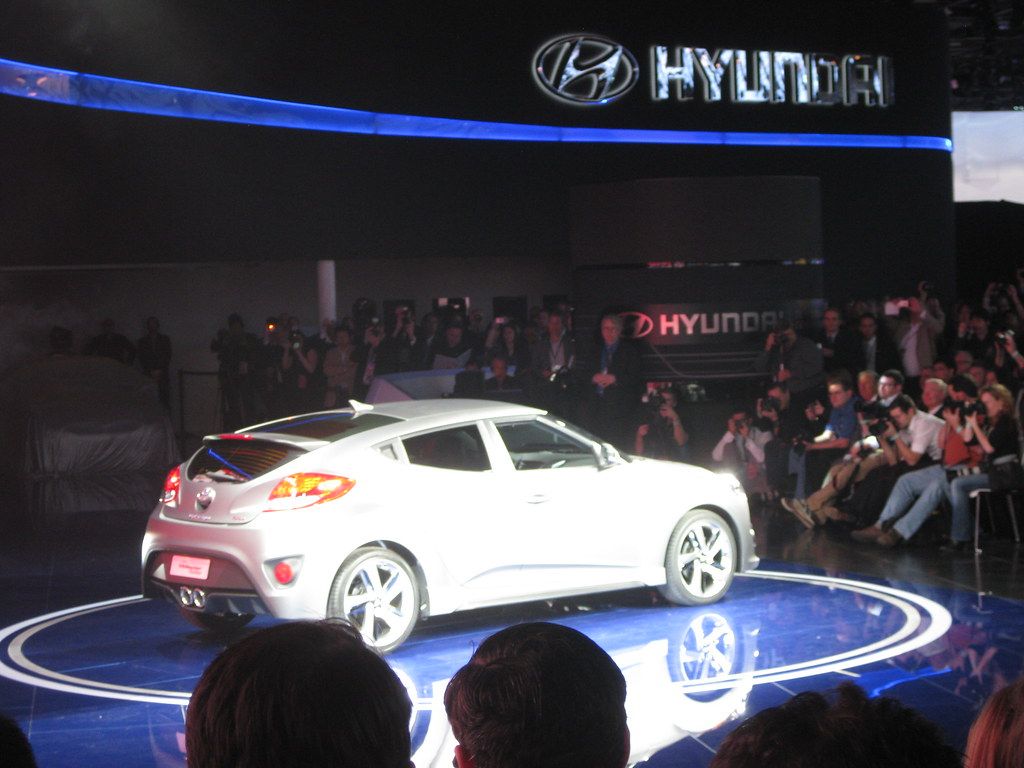
10. **Hyundai Veloster**The Hyundai Veloster, with its distinctive styling, three-door configuration, and reputation for responsive handling, certainly presented an intriguing option for drivers seeking something a little different. However, beneath this appealing exterior and dynamic promise, the vehicle harbored a range of significant problems that owners found increasingly “hard to ignore,” ultimately overshadowing its unique attributes and leading to considerable buyer’s remorse.
A critical concern for Veloster owners revolved around serious engine issues, some of which were severe enough to lead to “catastrophic failure.” Such a fundamental flaw in the powertrain is a major red flag, creating substantial reliability concerns and the potential for extremely costly repairs. The specter of engine failure casts a long shadow over the ownership experience, undermining any confidence drivers might have had in the vehicle’s long-term dependability.
Adding to the mechanical headaches were significant problems with the Veloster’s dual-clutch transmission. This advanced transmission, intended to provide quick and smooth shifts, often exhibited frustrating malfunctions such as “delayed acceleration, slipping, and jerky shifts.” These issues directly impacted the vehicle’s performance and drivability, making for an unpredictable and less enjoyable experience behind the wheel, contrary to its sporty pretensions.
As if these powertrain issues weren’t enough, the Hyundai Veloster was also criticized for problems with its “suspension and steering,” which further detracted from its promised responsive handling. Beyond the mechanical failures, practical concerns like the “difficulty in getting in and out of the car” and its generally “sluggish acceleration” from a daily driving perspective meant that what seemed like a sporty and stylish choice often failed to deliver on core expectations, leading many owners to reconsider their initial purchase.
Car Model Information: 2019 Hyundai Veloster Base
Name: Hyundai Veloster
Manufacturer: Hyundai Motor Company
Production: 2011–2022
Class: Sport compact car
Layout: Front-engine, front-wheel-drive layout
BodyStyle: hatchback
Predecessor: Hyundai Tiburon
ModelYears: 2012–2022
Assembly: Ulsan
Categories: All Wikipedia articles in need of updating, All articles with unsourced statements, Articles containing Korean-language text, Articles with short description, Articles with unsourced statements from May 2018
Summary: The Hyundai Veloster (Korean: 현대 벨로스터, romanized: Hyeondae Belloseuteo) is a compact car first produced in 2011 by Hyundai, with sales beginning in South Korea on March 10, 2011, and in Canada and the United States since the fall of 2011. In South Korea, it was marketed under Hyundai’s ‘Premium Youth Lab’. It was unveiled on January 10, 2011, at the Detroit Auto Show, and fills the void left when Hyundai discontinued the Hyundai Tiburon after the 2008 model year.
The car differs from most other hatchbacks with its asymmetrical door configuration, featuring one large door on the driver side and two smaller doors on the passenger side. This configuration is more common on commercial vehicles and minivans.
Get more information about: Hyundai Veloster
Buying a high-performing used car >>>
Brand: Hyundai Model: Veloster
Price: $15,545 Mileage: 91,570 mi.
Read more about: 15 Vehicles Drivers Wish They Never Bought: An In-Depth Look at Buyer’s Remorse Magnets for Informed Consumers
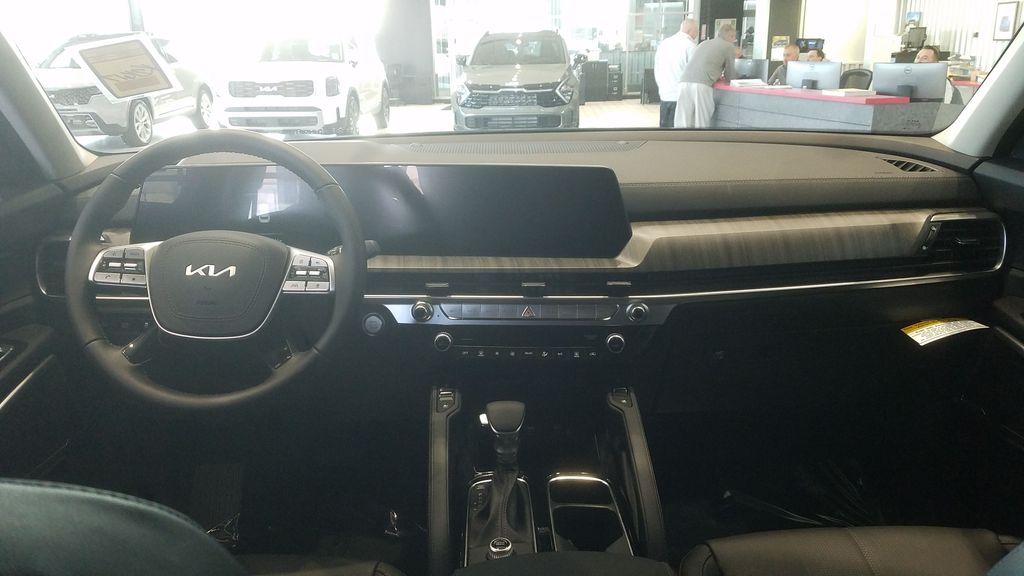
11. **Kia Rio**The Kia Rio, often lauded for its affordability and impressive fuel efficiency, regrettably also earned a reputation among its owners as a vehicle prone to buyer’s remorse. While its initial appeal lay in its budget-friendly nature and economical running costs, a deeper dive into owner feedback reveals a consistent pattern of dissatisfaction stemming from various performance and quality issues that ultimately caused the car to fall short of expected standards.
A prominent source of frustration for Rio owners involved persistent engine issues. These problems frequently manifested as “rough idling and misfires,” symptoms that not only compromise driving comfort but also point to underlying mechanical vulnerabilities. Such issues were often traced back to faults with crucial components like the spark plugs or ignition coils, necessitating repairs that chipped away at the car’s initial cost advantage and owner confidence.
Beyond the engine, the Kia Rio was criticized for what many perceived as “cheap interior quality.” This extended from the materials used to the overall finish, contributing to a sense that the vehicle did not offer satisfactory long-term durability or comfort. These “comfort issues” were not merely superficial; they affected the daily experience of driving and riding in the car, diminishing its appeal as a practical and pleasant mode of transport.
The widespread dissatisfaction with the Kia Rio is perhaps best summarized by a telling statistic: “Less than fifty percent of people who bought one stated that they would buy it again.” This low repurchase intent highlights a significant disconnect between initial buyer expectations and the long-term ownership reality. Furthermore, practical limitations such as “limited cargo room and backseat” were significant drawbacks for many, especially those needing more versatile utility, cementing its place on the list of regretted purchases.
Car Model Information: 2023 Kia Rio S
Name: Kia Rio
Caption: Fourth generation Kia Rio
Manufacturer: Kia
Aka: Kia Pride (2005–2017),Kia K2 (China; 2011–2020)
Production: November 1999 – December 2023
ModelYears: 2001–2023 (North America)
BodyStyle: hatchback
Class: Subcompact car
Layout: Front-engine, front-wheel-drive layout
Predecessor: Kia Pride,Kia Avella
Successor: Kia K3 (BL7)
Categories: 2000s cars, 2010s cars, Articles containing Korean-language text, Articles with short description, CS1 Croatian-language sources (hr)
Summary: The Kia Rio (Korean: 기아 리오) is a subcompact car manufactured by Kia from 1999 to 2023. Body styles have included a three and five-door hatchback and four-door sedan, equipped with inline-four gasoline and diesel engines, and front-wheel drive.
The Rio replaced the first generation Pride—a rebadged version of the Ford Festiva—and the Avella, a subcompact sold as a Ford in some markets. A second generation was introduced in 2005 in Europe and in 2006 in North America, sharing its platform with the Hyundai Accent, a subcompact manufactured by its sister Hyundai Motor Company in South Korea.
In August 2023, the K3 was introduced as its successor in several markets such as Mexico and the GCC countries.
Get more information about: Kia Rio
Buying a high-performing used car >>>
Brand: Kia Model: Rio
Price: $17,218 Mileage: 22,509 mi.
Read more about: 12 Shameless ’90s Comedies That Just Didn’t Care if You Were Offended: A Deep Dive into Fearless Humor
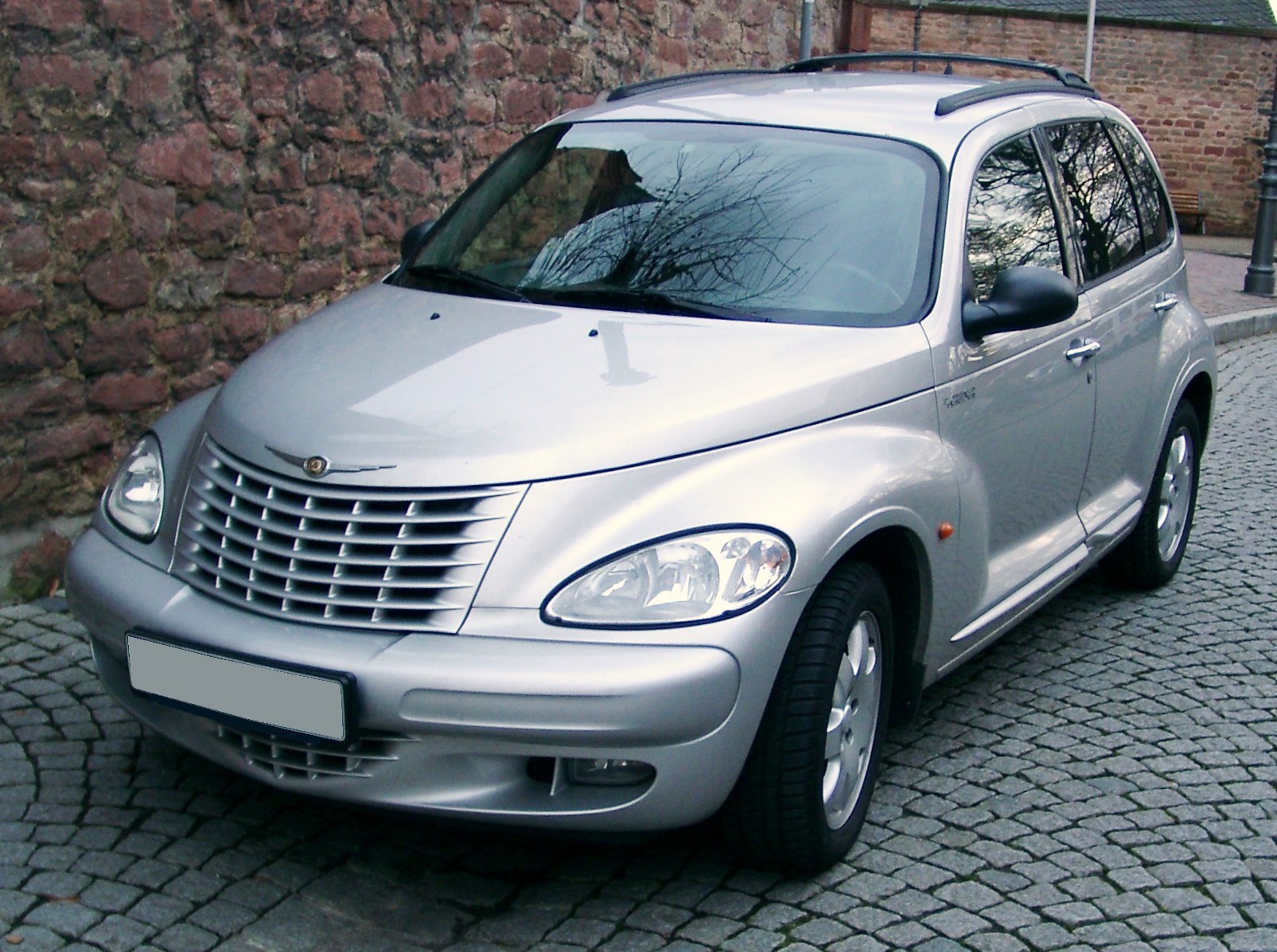
12. **Chrysler PT Cruiser**The Chrysler PT Cruiser occupies a unique space in automotive history, often remembered for its distinct, retro-inspired styling that typically evoked strong reactions – people either “love or hate” it, or perhaps “love to hate” it. However, for many owners, the issues with the PT Cruiser extended far beyond mere aesthetics, plunging into realms of significant mechanical unreliability that made the ownership experience a constant source of frustration and regret.
At the heart of many owners’ woes were “engine issues galore.” These problems were wide-ranging and critical, encompassing everything from intermittent “stalling” and persistent “rough idling” to more severe complications like “overheating” and, alarmingly, “head gasket failure.” Such a comprehensive list of engine faults indicates fundamental design or manufacturing weaknesses that severely compromised the vehicle’s core functionality and long-term dependability.
Compounding these engine troubles, the PT Cruiser was also plagued by significant “transmission and electrical problems.” Transmission issues could manifest as unreliable shifting or outright failure, directly impacting the vehicle’s drivability and safety. Electrical glitches, on the other hand, could lead to a host of unpredictable malfunctions, from minor inconveniences to critical system failures, adding another layer of complexity and cost to an already challenging ownership experience.
Collectively, these myriad mechanical and electrical shortcomings created an ownership reality far removed from any stylistic charm the car might have possessed. The persistent need for repairs, the unpredictability of its performance, and the sheer cost of maintaining such a problematic vehicle ultimately led countless owners to deeply regret their buying decision, confirming that for the PT Cruiser, problems went much deeper than its polarizing looks.
Car Model Information: 2022 Honda Civic Sport
Name: Chrysler PT Cruiser
Manufacturer: Chrysler
ModelCode: PT,PG
Production: 2000–2010
ModelYears: 2001–2010
Assembly: Toluca, Mexico State
Designer: Bryan Nesbitt
Class: Compact car
BodyStyle: convertible
Platform: Chrysler PT platform
Related: Dodge SRT4,Dodge Neon
Predecessor: Dodge Neon
Successor: Lancia Delta#Third generation
Layout: Front-engine, front-wheel-drive layout
Engine: ubl
Transmission: Ultradrive#40TE
Wheelbase: 103 in
Abbr: on
Length: 168.8 in
Width: 67.1 in
Height: 63 in
Weight: 3123 lb
Categories: 2010s cars, All articles with unsourced statements, Articles with short description, Articles with unsourced statements from March 2018, Cars discontinued in 2010
Summary: The Chrysler PT Cruiser is a compact car that was built by the American company Chrysler from 2001 until 2010. Introduced as a five-door hatchback wagon, a two-door convertible variant was also made from 2005 until 2008.
Originally planned as a Plymouth model, the PT Cruiser was ultimately marketed as a Chrysler when Plymouth was discontinued. Intended to invoke 1930s aesthetics, the exterior of the PT Cruiser was designed by Bryan Nesbitt. The model received an intermediate facelift for the 2006 model year. Interior packaging was noted for its high roof, high h-point seating, and flexible cargo and passenger configurations enabled by a multi-level rear cargo shelf and rear seats a user could fold, tumble, or remove.
The PT Cruiser was produced in Mexico and Austria at the Toluca Car Assembly and Eurostar Automobilwerk factories respectively. By the end of production in July 2010, worldwide production had reached 1.35 million.
In its nameplate, PT stands for “Personal Transport” or “Personal Transportation”. PT was the PT Cruiser’s product code for the Mexican-made units.
Get more information about: Chrysler PT Cruiser
Buying a high-performing used car >>>
Brand: Chrysler Model: PT Cruiser
Price: $26,626 Mileage: 14,020 mi.
Read more about: 11 Iconic Classics: Your Ultimate Guide to Restoring Affordable Dreams Instead of Buying Them
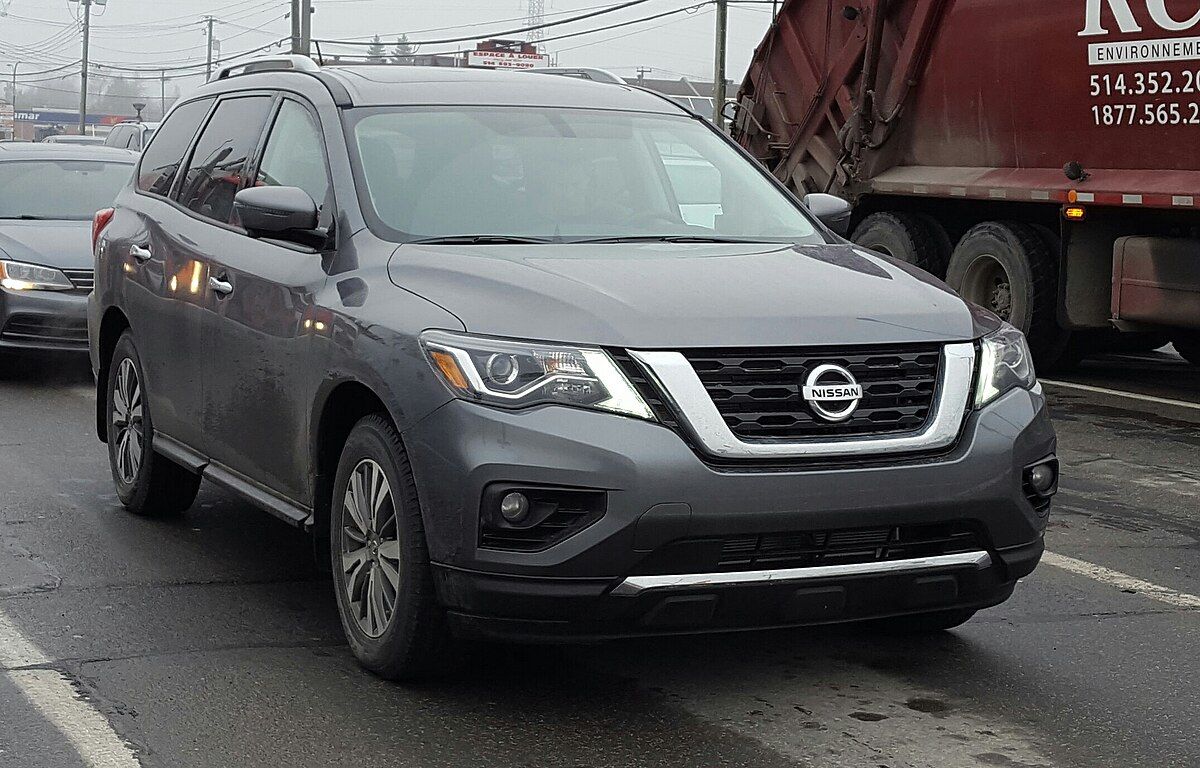
13. **Nissan Pathfinder**Despite its popularity as an SUV, the Nissan Pathfinder has unfortunately become synonymous with problems that lead its owners to express significant buyer’s remorse. For a vehicle often chosen for its promise of reliability and utility, its recurring issues have created a considerable gap between expectation and reality, turning what should be a robust family hauler into a source of ongoing frustration for many.
A principal point of contention for Pathfinder owners, consistent with other Nissan models on this list, is the presence of a continuously variable transmission (CVT). This transmission technology, in the Pathfinder, frequently presented a range of undesirable behaviors. Owners reported experiencing “rough shifting,” unsettling “shuddering,” and even instances of the transmission “overheating,” severely impacting the smoothness and dependability of the drive.
What is particularly galling for some Nissan Pathfinder owners is the unfortunate necessity of having to “replace the transmission” entirely due to these persistent issues. Such a major and costly repair profoundly affects the vehicle’s long-term value and the owner’s financial outlay, further solidifying the sense of regret. It indicates a fundamental flaw in a core component that should provide years of trouble-free operation.
Beyond the pervasive transmission concerns, the Pathfinder was also known to suffer from “engine issues and fuel system problems,” adding to the “laundry list” of mechanical faults that frustrate owners. Furthermore, anecdotal complaints of the “rig boring” and being “more like a minivan” reveal a qualitative disappointment that, while less tangible than mechanical failures, still contributes to overall dissatisfaction, suggesting the vehicle failed to deliver on its perceived rugged SUV character.
Car Model Information: 2023 Nissan Pathfinder SL
Name: Nissan Pathfinder
Caption: 2022 Nissan Pathfinder Platinum 4WD (R53, US)
Manufacturer: Nissan
Production: 1985–present
ModelYears: unbulleted list
Layout: unbulleted list
Class: unbulleted list
Chassis: unbulleted list
Predecessor: unbulleted list
Successor: unbulleted list
Categories: 1990s cars, 2000s cars, 2010s cars, 2020s cars, All-wheel-drive vehicles
Summary: The Nissan Pathfinder is a range of sport utility vehicles manufactured by Nissan since 1985. Until the third-generation model, the Pathfinder is based on Nissan’s compact pickup truck platform which it shares with the Navara/Frontier.
The Pathfinder was marketed as the Nissan Terrano (Japanese: 日産・テラノ, Hepburn: Nissan Terano) outside North America. Beginning in 2004, the vehicles were marketed globally as the Pathfinder.
In 2012, the R52 series Pathfinder was released as a three-row crossover SUV based on the unibody Nissan D platform, moving away from the body-on-frame chassis format. The role of a mid-size body-on-frame SUV in Nissan’s global lineup was passed to the Terra/X-Terra, which was released in 2018 and based on the D23 series Navara.
Get more information about: Nissan Pathfinder
Buying a high-performing used car >>>
Brand: Nissan Model: Pathfinder
Price: $34,900 Mileage: 18,055 mi.
Read more about: The 15 Most Underrated SUVs You Can Buy Right Now: Uncovering Automotive Excellence Beyond the Hype
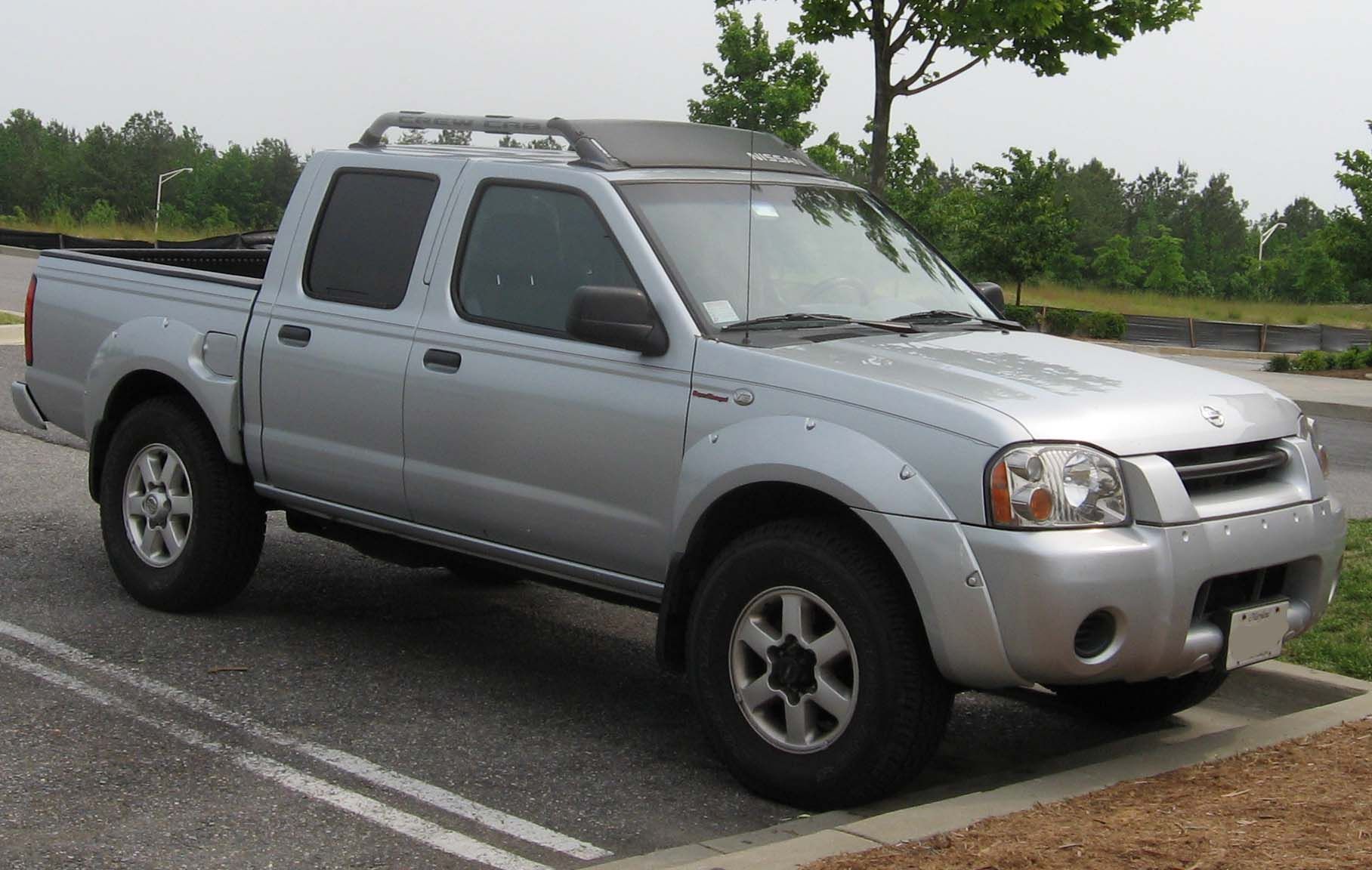
14. **Nissan Frontier**The Nissan Frontier, a mid-size pickup truck, has garnered a reputation for a multitude of problems that have left many of its owners shaking their heads and often “pounding the dashboard with their fists” in frustration. While pickup trucks are generally expected to be robust and reliable workhorses, specific model years of the Frontier, particularly those manufactured between 2005 and 2010, were marred by a critical and widely recognized design flaw that led to extensive reliability issues.
The most notorious problem during these years centered on severe “transmission issues” stemming from a design defect where “the radiator leaks coolant into the transmissions.” This seemingly innocuous leak had catastrophic consequences, as the mixing of coolant with transmission fluid significantly degraded the transmission’s performance and lifespan. It was a ticking time bomb for many owners, leading to inevitable mechanical distress.
The practical results of this radiator leak were highly disruptive to the driving experience. Owners frequently reported experiencing “slipping gears,” “herky-jerky shifting,” and ultimately, severe “transmission failure.” Such widespread and critical failures in a core drivetrain component transformed the Frontier from a potentially capable pickup into a source of constant concern and expensive repairs, profoundly undermining its utility and value.
In addition to these devastating transmission problems, Nissan Frontier owners also faced “engine and timing chain issues.” These additional mechanical concerns further cemented the vehicle’s reputation for unreliability and high maintenance costs. For a segment that values dependability and ruggedness above all, these consistent flaws explain why many owners found themselves deeply regretting their investment in a Nissan Frontier from these problematic model years.
Car Model Information: 2024 Nissan Frontier SV
Categories: All set index articles, Articles with short description, Nissan vehicles, Set index articles on cars, Short description is different from Wikidata
Summary: The Nissan Frontier is a nameplate used on three different pickup truck models by Nissan:
Nissan Frontier (international), an alternative nameplate for the NP300/Navara on some markets
Nissan Frontier (North America), a rebadged NP300/Navara from 1997 to 2021, then became a separate model since 2021
Nissan Frontier Pro, a rebadged Dongfeng Z9 PHEV that will be available from 2025.
Get more information about: Nissan Frontier
Buying a high-performing used car >>>
Brand: Nissan Model: Frontier
Price: $27,773 Mileage: 5,936 mi.
Read more about: America’s Automotive Heartbeat: Discovering 15 Classic Cars That Reign Supreme, State by State
The journey through these 14 vehicles serves as a powerful testament to the adage that “you pay too much to choose too poorly.” From critical battery defects in early electric models to chronic transmission failures, pervasive engine problems, and myriad electrical glitches, the common thread among these regretted purchases is a fundamental failure to deliver on the promise of reliability and value. Learning from these shared experiences is not merely an exercise in caution; it is an essential strategy for making informed decisions in a market saturated with choices. By prioritizing objective data, owner feedback, and long-term performance over initial appeal, consumers can significantly reduce the risk of buyer’s remorse, ensuring their next vehicle truly meets their needs and expectations for years to come.

